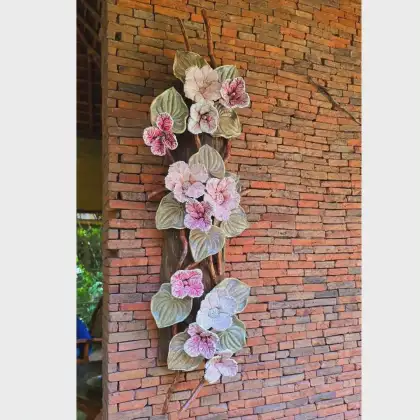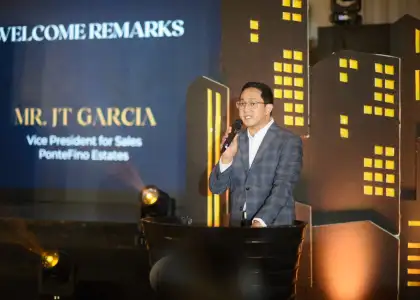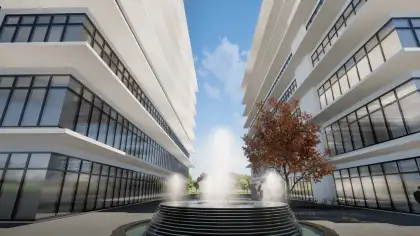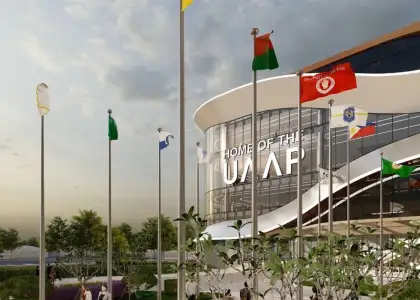Philippines Has a Housing Problem, So What Is Being Done About It?

This May 27-30, Urban Land Institute (ULI) will host the 2024 Asia Pacific Summit in Tokyo, Japan. Ahead of the regional conference, let’s recap some of the notable concerns and developments raised at the last ULI Conference in the Philippines.
At the event, the Future of Housing Panel was moderated by ULI Hong Kong’s Vice Chair Eli Konvitz, joined by a stellar lineup of panelists: VCDC Founder and CEO Victor Consunji, Federal Land President William Thomas Mirasol, SHDA First Vice President Francis Villegas, and CUBO Modular Co-Founder Zahra Zanjani.
With their different contributions to the country’s housing industry, each presented various issues and potential scenarios that could play out in the near future.
1. PH has a housing problem (and it could be worse than we think).
Subdivision and Housing Developers Association (SHDA) First Vice President Villegas presented an unfortunate reality – our problem may be bigger than we initially thought. As of writing, everyone’s working toward resolving the 7 million housing backlog, which, as Villegas said, was drafted way back in 2013. In other words, it’s outdated.
“It’s not being redrafted into something new. There’s going to be a new housing roadmap that will be released by 2025. [The results] are going to be more challenging because the initial estimates would be inaccurate. In other words, the backlog would be even bigger,” Villegas said.
CUBO Modular Co-Founder Zanjani pointed out that according to the United Nations, the housing backlog in the Philippines is expected to triple in the coming decades – by 2024, it’s estimated to reach 22 million.
2. Prices are growing at an extraordinary rate.
No, you’re not imagining things. Everything is becoming more expensive nowadays, and that includes the housing industry. The Victor Consunji Development Corporation (VCDC) Founder commented that one of the most glaring concerns they should be addressing (but is not talked about as much) is pricing.
“We are pricing our population out of our profits. Over time, land prices are going up, product prices are going up, and we simply cannot afford it. About a decade ago, we were selling certain products at around P6.4 million. The same product today ranges about P28 million,” Consunji explained.
Intervention, then, becomes the main concern. Lowering the prices may seem like a proper solution, but of course, developing properties comes at a price and it can’t all be charity. Consunji adds, “There’s a limit to how cheap a unit [can] be… You can market it and make it look good, then somehow convince [your customers] to pay an arm and a leg to buy your product.”
Product innovation is another possibility, cutting down on the “fat” by removing what’s not important. He also said that it doesn’t matter if you’re in the affordable housing market or luxury housing market, either way: the problem is the same. There’s a gap that, somehow, must be bridged.

3. Are these homes climate-ready and sustainable?
In an analysis published by The Cross Dependency Initiative (XDI), several provinces in the Philippines are among the most vulnerable to climate change in the whole world – Metro Manila, Bulacan, Leyte, Isabela, and Davao del Sur.
Zanjani pointed out this fact during the panel discussion to highlight that developing housing should not just address the shortage, but also address a future wherein climate change is only bound to get worse.
“The people who are going to experience all the consequences of our actions, the materials we’re choosing, how we’re building and establishing these ecosystems in real estate or construction, is not going to be us, but the generations after us. So are we building just for today, or are we actually prepared to mitigate the climate risks for future generations?”
4. There aren’t enough skilled workers.
Not just in housing, but also in other industries, there is a skill gap that everyone is scrambling to address. With housing in particular, developers are continuously scouring the country for skilled labor.
“Whatever pool is there is never enough, so we always have to essentially pull in workers. But then there’s an investment to bring in these [workers], plus the skills have to be developed. I believe it’s our responsibility as a developer to develop these skilled workers. Because it doesn’t happen anywhere else, right? It’s time-consuming, it’s difficult, but [the solution’s] there,” Consunji said.
Federal Land President Mirasol added: “We’re aware that there’s been an effort to try to recruit and train people which, yes, takes time. But developers are creating closer partnering arrangements with various contractors. From the developer side, we commit, let’s say, a building [has] around 50 projects over the next five years or so. In turn, we ask our contractors to commit to us that they will have the manpower that we need when we need it.”
Konvitz asked, “Does that drive up prices?”
To which, Mirasol cleverly responded: “It should not.”

5. Streamlining government processes and infrastructure projects should be the priority.
Red tape needs to be cut down more. For comparison, Villegas pointed out that in Bangkok, Thailand, you would only need around 20 signatures for a development project to be completed. Something that would take typically two months in Thailand.
“Here [in the Philippines], you would need about 260 signatures. Takes a year, at least. So if we could streamline that process, it would be a big help and we need government support for that,” Villegas said.
The second concern would be better infrastructure to improve access. Villegas shared that as developers, they want to decongest the National Capital Region (NCR) by creating developments in more cities. However, the government (or the local governments) should do their part in the urbanization of towns and villages so that the population density problem in NCR and other major cities will be alleviated.
6. But are we just plagued with problems?
In 2022, Federal Land and Nomura formed a Joint Venture (JV) that hopes to introduce a new kind of lifestyle for Filipinos – dubbed Federal Land NRE Global Inc. (FNG). They will develop a total of 250 hectares in Metro Manila and select provinces (Cavite and Cebu). A massive deal, as pointed out by Konvitz, it’s a “huge vote of confidence,” not just in Federal Land but in the Philippines as a whole.
“The biggest challenge in putting that [joint venture] deal together was the fact that it was done during the pandemic. It was a very big deal done over many months, but beyond that, it was fairly simple, quite honestly. The Philippines has had a very long fascination with Japanese products and brands, so [our country] was a natural market,” Mirasol pointed out.
He added that they have a 50-year plan which entails developing a number of projects in the Philippines over those five decades: “The fundamentals for development in the Philippines are quite good. As mentioned earlier, we’re a very young [country] and population with a sustainable growing economy.”
All in all, while there are issues that the housing industry is facing, it is still full steam ahead for these housing developers and industry leaders. As Mirasol pointed out as the panel discussion ended: “From a development point of view, I think the future of the Philippines is very, very bright.”
Get the latest curated content with The Beat Asia's newsletters. Sign up now for a weekly dose of the best stories, events, and deals delivered straight to your inbox. Don't miss out! Click here to subscribe.




























































